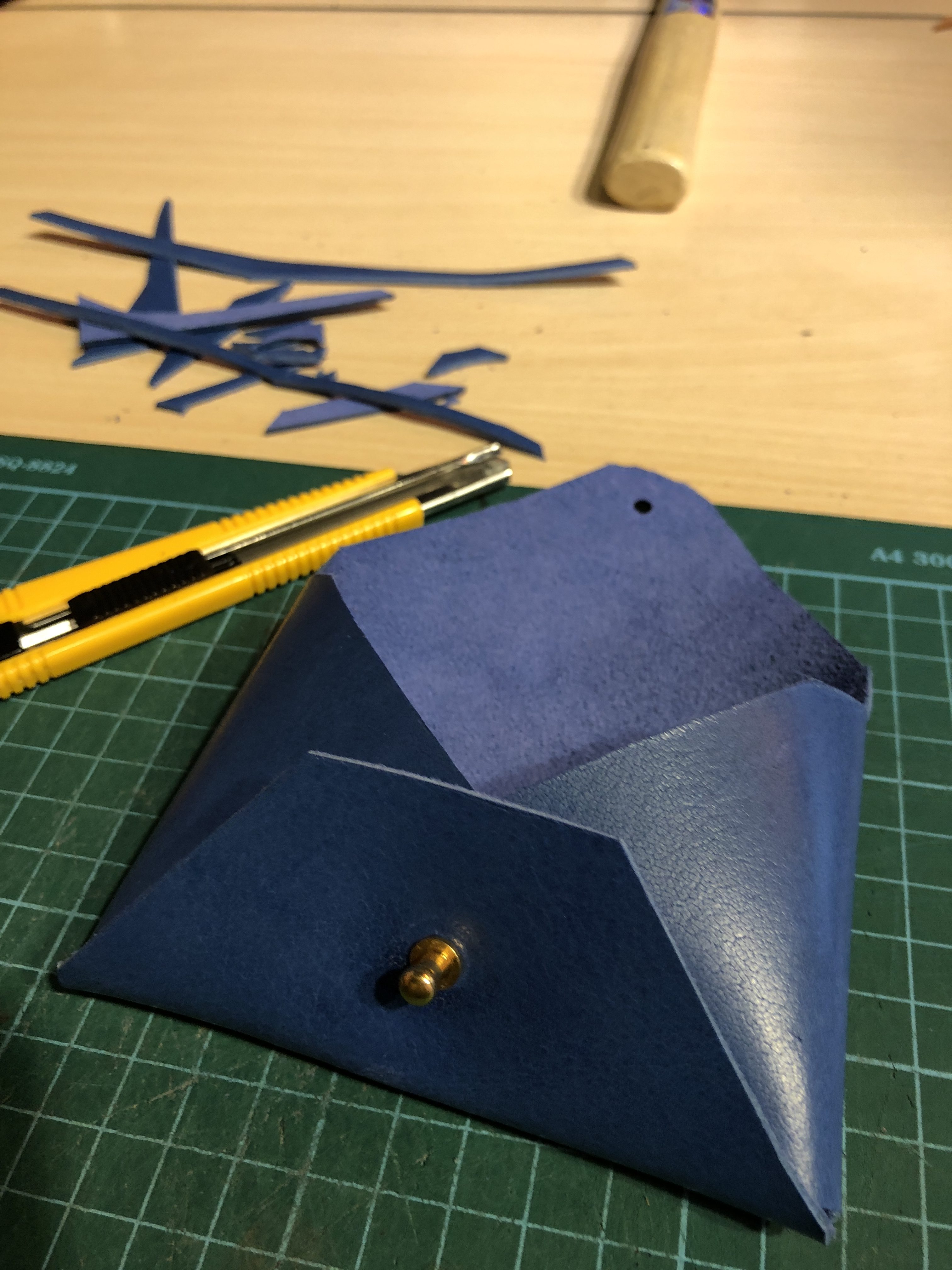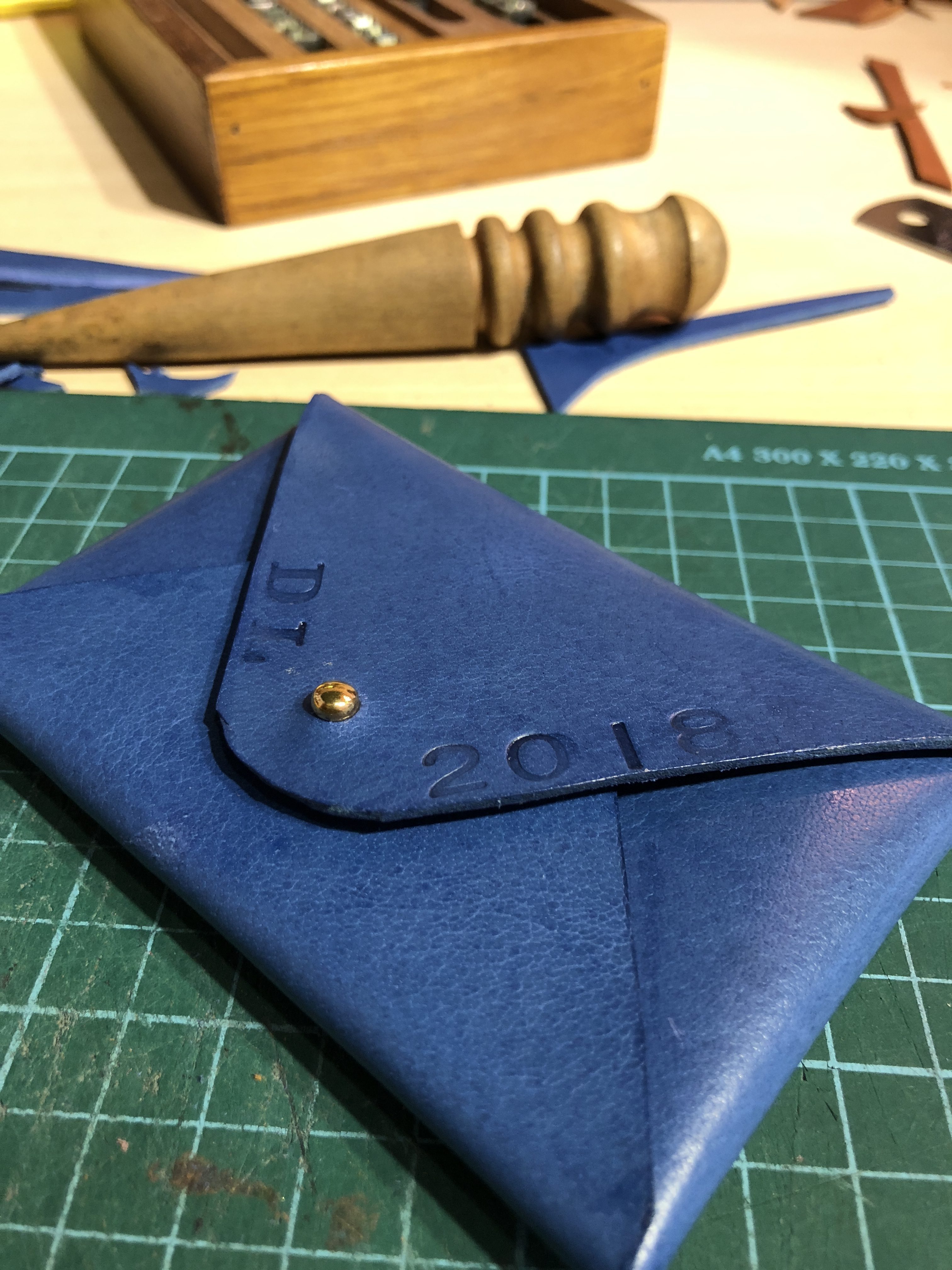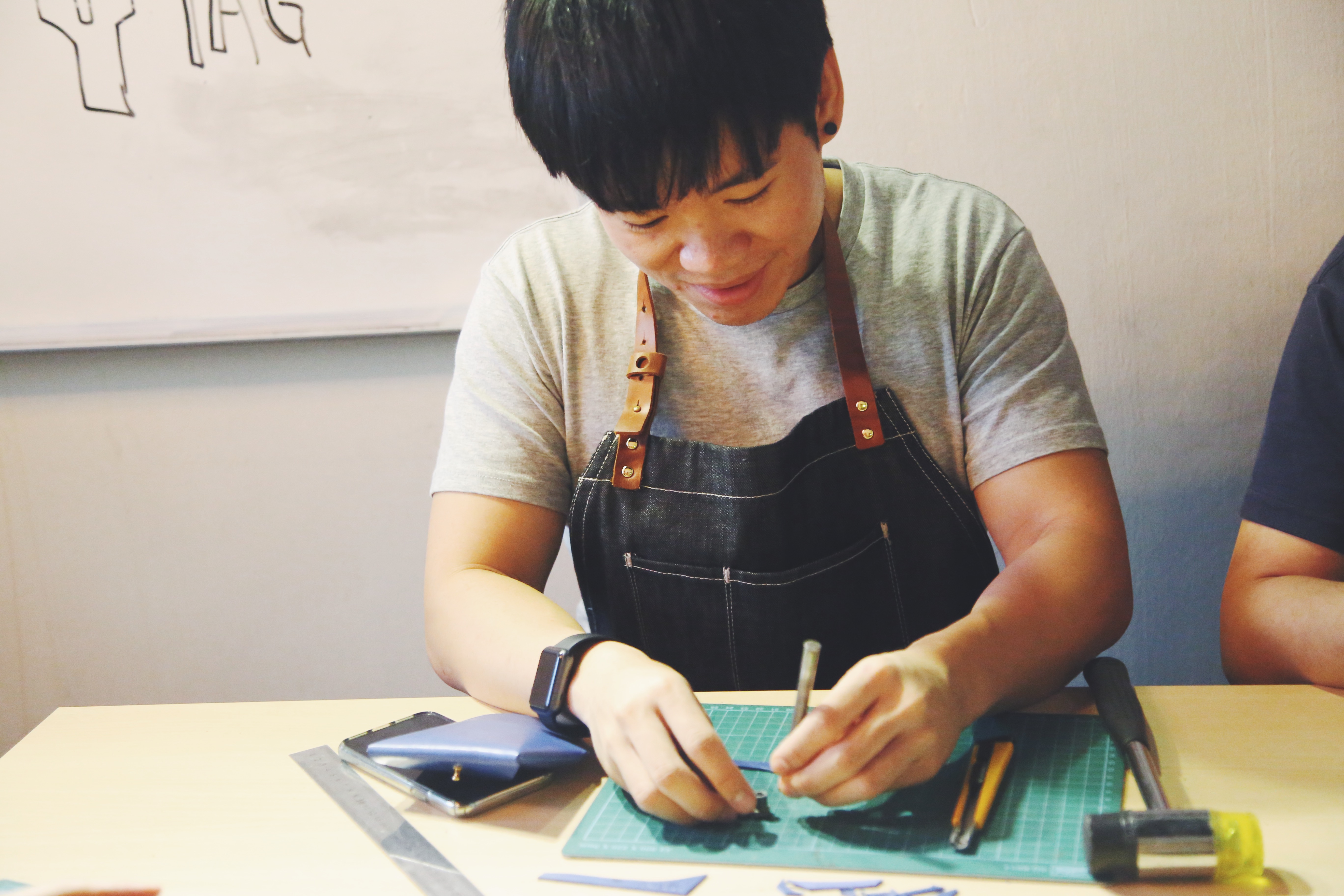Process Documentation:

I joined a class to craft a leather cardholder. The practitioner started off with a piece of conditioned leather that has a cutout drawn in pencil. We would cut it out with a penknife guided by a ruler for the straight parts and free-hand for the curved edges. We were also told to use a good amount of force for smooth edges.
Once the shape has been cut out, using a leather hole-puncher, holes of differing sizes are made in the sides of the cutout for the cardholder’s opening and holder. Three edges were folded multiple time and held it together by screwing a metal piece to form the pocket of the cardholder.

Oil is applied to the edges with a balm to smoothen the edges and protect it from external damage. At this stage the wallet is more or less done and the final step is to customize indentations.
To make an indentation, a small indentation kit is provided with different characters that can be left on your leather product. To make an indentation, you dap a little water on the area for indentation with water. It is then hammered lightly to prevent it from punching through the product. You are done whenever you are satisfied with your design!

Me testing out the indentation tool on a smaller strip of leather before on my finished product.
Tools:
- Penknife, ruler, and cutting board for cutting out shape of wallet
- Wearable Craftsman Apron for protection
- Hole-puncher
- Oil Balm Applicator
- Hammer and Indentation toolset to leave your desired mark on leather product
Worksite:
The worksite is a small craft workshop with proper benches, chairs, and desk lights for the practitioner to perform their craft with focus. Materials (leather and bits) are stored all around the workshop on hooks/shelves on walls. There was a part of the workshop with a big hydraulic press machine for bigger indents that can’t be done normally.
Personal Insights/Pain Points:
It’s a really cool practice that requires precision and concentration to get the job done. You can express creativity with your work with choice of color and indentation. However, once you mess up, it is almost irreversible — a mistake on a good piece of leather is hard to recover and costly (raw material is expensive). Overall, the craft itself is not as easy as it seems as you require accuracy and precision when cutting and imprinting on leather.


